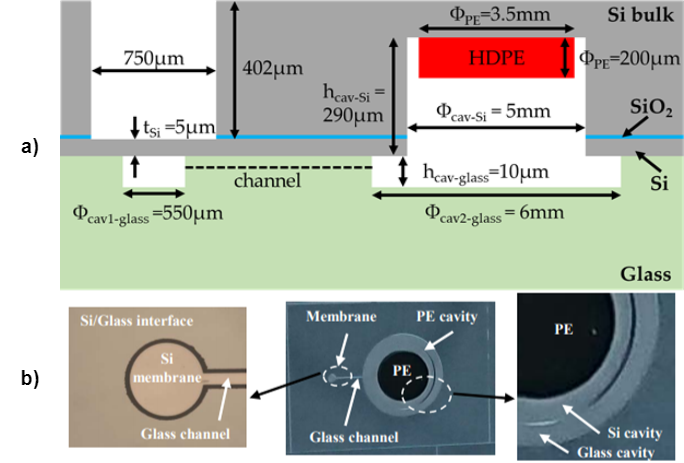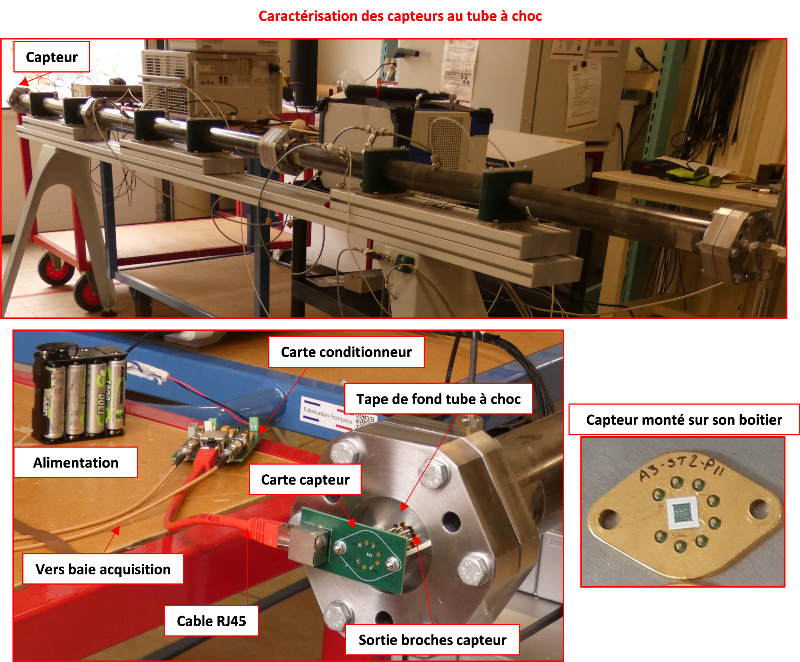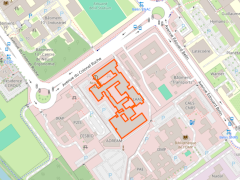Wireless sensors for constrained environments
Two types of sensors are studied: passive sensors with electromagnetic transduction and ultra-fast sensors for explosive science.
The MINC team is developing new wireless sensors for constrained environments along the following lines:
Passive sensors with electromagnetic transduction
In the case of severe environments (very high temperatures, strong nuclear radiation, etc.) or for applications in which energy autonomy is insufficient (energy recovery impossible or insufficient, poor accessibility to replace batteries, etc.), passive sensors (without on-board energy and without electronics) are an interesting solution. To compensate for the short interrogation distance of inductively coupled sensors (few 10 cm) or Surface Acoustic Wave (SAW) sensors (few meters), new concepts of high frequency EM transducers (> 1 GHz) have been studied from the beginning of the 2000s. The operating principle of this kind of sensor is based on the modification of the properties of an electromagnetic device by the quantity to be measured and which can then be interrogated remotely with the help of a reader by analysing backscattered energy. LAAS was the first laboratory in France to study this type of device, covering the entire theme ranging from the transducer to wireless interrogation using an FMCW (Frequency Modulated Continuous Wave) radar. We have chosen to focus on transducer concepts presenting high sensitivities to the quantity to be measured (Modifications of the electromagnetic properties of a material, Modification of EM coupling by mechanical or fluidic moving parts).
Several concepts have been validated for the measurement of pressure (2007), temperature (2010), stress (2011) and nuclear radiation (2013). Then the work focused on application cases with restrictive industrial specifications, particularly for nuclear applications. For most of this work, the chosen operating frequency was centred on the radar band [22.8 GHz – 24.8 GHz].
The prospective for this theme currently focus on the development of electromagnetic transducers based on metallic 3D printing and coupling with a conductive fluid.

Passive dosimeter: (a) cross sectional view and (a) photographs of the cavity fabricated on the glass substrate after anodic bonding.
Sensors for explosive science
This work is carried out within the framework of the joint laboratory LICUR-2015-2025 (Laboratory on Instrumentation and Ultra-Rapid Sensors) between the CEA-DAM and the LAAS. A part of the study is related to the development of new sensors for the analysis of aerial shock waves generated by the explosion of pyrotechnic charges. Shock waves are phenomena with a very strong temporal gradient with a sudden variation in physical quantities (pressure, temperature, velocity, etc.), all in extreme environments in pressure (and/or in temperature.
The objective is to develop a wireless system making it possible to improve the measurement accuracy by a factor of 2 to 5 of static overpressure (between a few bars and 70 bars). The work already carried out has made it possible to produce a high bandwidth pressure transducer (mechanical resonance frequency greater than 10 MHz). The chosen solution is a transducer with a silicon membrane and piezoresistive gauges which presents the advantages of extensive miniaturization and possible integration of the entire wireless measurement chain. The wireless communication platform, based on the frequency modulation of a carrier using a Voltage Controlled Oscillator (VCO), was validated with the transmitting antenna located in the fireball.
Ultimately, the objective is to obtain a multi-sensor system whose sensitive surface is of the order of magnitude of a commercial unit pressure sensor, compatible with the extreme environment encountered in this type of applications.

Shock-tube characterization of sensor, (a) shock-tube set up , (b) zoom on end-wall shock-tube instrumentation, (c) pressure transducer on its metallic holder
Contacts : Patrick PONS, Hervé AUBERT












